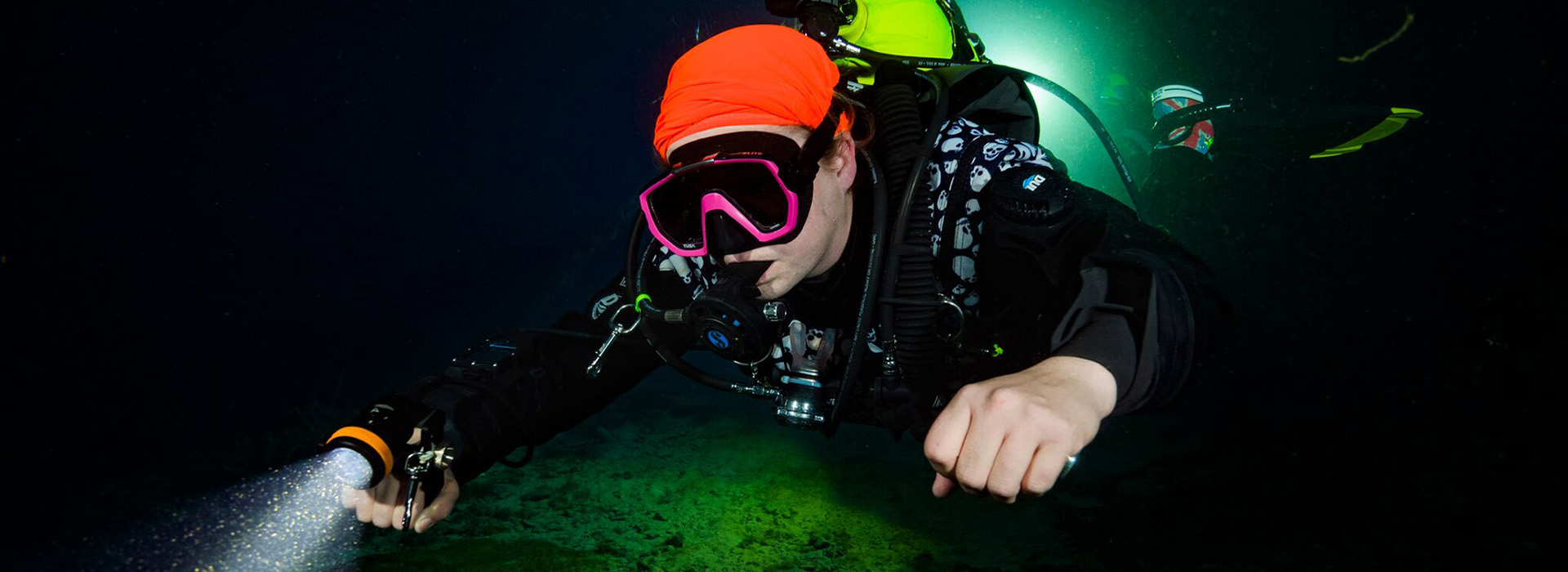Important Knowledge for SCUBA Divers About how Light is Absorbed by Water
by Archive Richard
Media Reports
Our old friend Roy G. Biv is a stranger to many but is quite well known by photographers, artists, scientists, and anybody involved in working with light and color. Roy G. Biv is an acronym that allows us to easily remember the colors that make up the visible light spectrum: Red, Orange, Yellow, Green, Blue, Indigo, and Violet. These are the colors of the rainbow and when they are combined, our eyes see white light. We identify the color of an object by the frequency of the light it reflects. An object seen as red is actually only reflecting red light. Roy is somebody we divers need to know too because water not only handles sound and heat differently than air, it also does special things to light. Knowing Roy G. Biv helps us to understand how that affects us underwater.

There are many reasons to learn about the effects of water filtering light. Underwater photography is one. If we don’t compensate for color loss our pictures will look washed out with no colors but blues and greens. We use filters, strobes, and special settings on digital cameras to correct for color loss. Photography is a topic in and of itself but understanding color loss is also important because it affects everything we see underwater. We miss seeing the dramatic colors of the corals and marine life. Our equipment, gauges, and even other divers look different with the color changes. Aside from losing enjoyment of the beauty, the loss of color can cause safety issues so, it’s a good idea to understand it and be ready to compensate for the color changes

Water begins to absorb color immediately as we descend. In the first 10 feet we lose most of the red, some of the orange, and a small amount of the yellow. By the time we reach 25 feet of depth we have lost most of the orange colors and at 35 feet nearly all of the yellow is gone, leaving only green, blue, indigo, and violet. At 50 feet we begin to lose green and it is completely filtered out at 100 feet, leaving blue as the predominant color. By 200 feet of depth even blue is gone. This continues, and finally violet light fades out after hundreds of feet. Water also absorbs light in every direction, not just from the surface. If a diver points a dive light or a camera strobe at an object 20 feet away the light travels to the object and is reflected back. By the time it returns it has effectively traveled through 40 feet of water, losing red and most of the orange and yellow. This is because the light energy has been absorbed traveling to the object. The light that is reflected is so diminished that when it travels 20 feet back most of the color has been filtered. This is particularly important for the photographer to remember but is also important for the rest of us. Our buddy’s red fins aren’t going to look so red from 40 feet away, even with a dive light.

The good news is that in recent years there have been tremendous improvements in dive light technology, making lights brighter, smaller, tougher, and more affordable. This makes it more practical to carry a light on every dive. Carrying a dive light will allow you to compensate for color loss and help you to identify objects underwater. There are many uses for a dive light and carrying one on every dive is a good idea. Some dive sites restrict the use of a dive light so be sure and check the rules.
Now that you have been introduced to our old buddy Roy you understand the tricks he plays. Armed with a good dive light you can deploy it at the right moment and tell the difference between a Gray Angelfish and a French Angelfish or between a White Grunt and a Blue Striped Grunt. Or you can tell your dive buddy how beautiful his new orange fins look underwater. Roy G. Biv is a predictable little fellow and he means no harm so keep him in mind as you descend.
